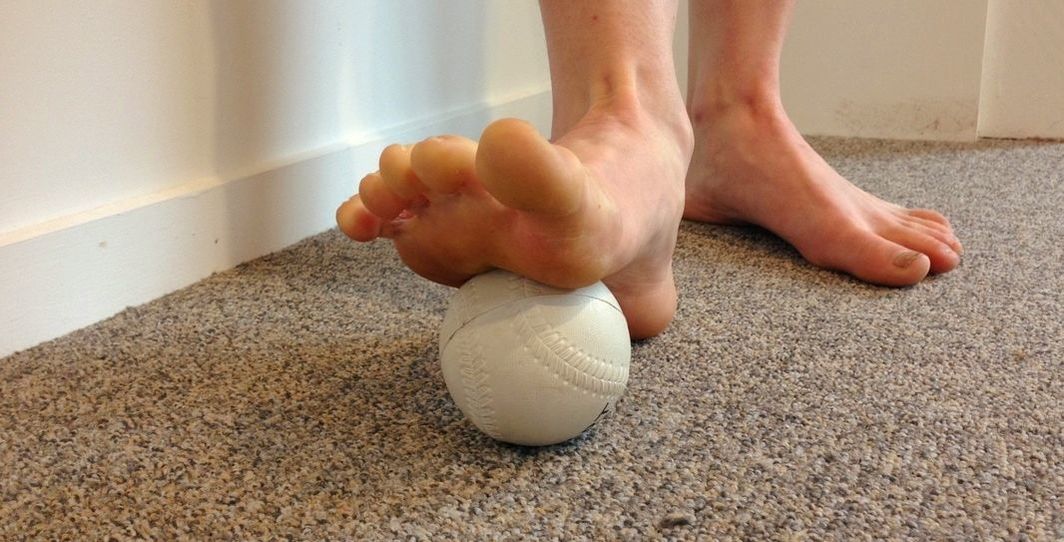We all know a runner with some sort of injury, niggle or aches. You’ve probably been that runner at some stage! It’s unfortunate how prevalent running injuries are. A very common area of complaint for those of us ticking up the miles on foot is the ankle. From ankle sprains to calf strains and everything in between, here’s a list of a few things you should be aware of that are likely contributing to any sort of ankle or foot pain.
Your day to day shoes
NOT your running shoes. Have a think about how many hours you spend in your running shoes versus the hours you spend in just about any other shoe in your wardrobe. The shoe you spend 90% of your time in is the one you need to consider first if you’re having any sort of niggling issue, from your ankle to your spine! The human foot is made up of 26 bones and 33 joints. It is meant to move! Locking it up in a stiff, narrow, pitched and generally restrictive shoe is the exact opposite of what the foot was made for. That leather dress shoe or those heels you’re wearing for sixty hours a week are likely contributors to your ankle pain by means of slowly moulding the foot into an immobile brick of human tissue.
Your running technique
Funnily enough, not many people actually know how to run well. Most of us go through a thought process somewhere along the lines of “it’s just running, there’s nothing to it. Just put on some running shoes and put one foot in front of the other!”
This line of thinking would have worked 2000 years ago, before the advent of paved roads, chunky “running shoes” and before we began to spend our days predominantly sitting down. For these reasons – and many more – most people have gross musculoskeletal dysfunction when compared to the optimal biomechanics of running. A good sign of this is pain. Ankle pain, knee pain, hip pain or back pain. So, what to do? Have a coach check out your running style and give you one or two things to focus on. It’s remarkable how much things can change with a little technical analysis.
Your running routine
Chances are, when you go for a run that’s all you do. You just walk out the door, start running for a prescribed amount of time and then trot back in the door when you’re done. Some of us might add a 10 second calf or swing of the leg immediately prior to a run, or perhaps once finished. How many of us actually take the time to warm up the many joints of the feet and ankles? Working on dynamically stretching the fascia that holds the feet together but allows for springy motion when functioning correctly? It might be time that you started including some foot-specific work in your warm-up (or lack thereof) to ensure form, function and longevity! All James Kuegler Coaching sessions and events begin with a mobility routine catered towards this.
Not giving your feet enough attention
Following the previous point, it is very rare that we come across a runner who gives their feet a bit of extra love and attention, despite the miles upon miles that they run for. By love and attention, we mean the warm-up routine mentioned above as well as cool-down stretching and a bit of manual therapy. Simply rolling your arches over a firm ball (e.g. cricket or hockey ball) can make massive changes to the entire posterior chain (all the connective tissue on the backside of your body). Using your own hands to massage the underside of your feet, between your toes and up into the Achilles tendon is not as complex as people are afraid of. You can’t go too far wrong by just applying a little pressure and working out any niggles while introducing some movement to the joints of the feet and ankles.
Your running shoes
Finally, and only after considering all of the above, consider your running in shoes in a similar fashion to our discussion above. Do they let your feet move in a way that they should? We’ve written about running shoes previously; you can check out that article here. Basically, our suggestion is that a shoe is 1) as flat as you can handle, 2) flexible, 3) shaped like a foot, and 4) close to the ground as you can handle.
NOT your running shoes. Have a think about how many hours you spend in your running shoes versus the hours you spend in just about any other shoe in your wardrobe. The shoe you spend 90% of your time in is the one you need to consider first if you’re having any sort of niggling issue, from your ankle to your spine! The human foot is made up of 26 bones and 33 joints. It is meant to move! Locking it up in a stiff, narrow, pitched and generally restrictive shoe is the exact opposite of what the foot was made for. That leather dress shoe or those heels you’re wearing for sixty hours a week are likely contributors to your ankle pain by means of slowly moulding the foot into an immobile brick of human tissue.
Your running technique
Funnily enough, not many people actually know how to run well. Most of us go through a thought process somewhere along the lines of “it’s just running, there’s nothing to it. Just put on some running shoes and put one foot in front of the other!”
This line of thinking would have worked 2000 years ago, before the advent of paved roads, chunky “running shoes” and before we began to spend our days predominantly sitting down. For these reasons – and many more – most people have gross musculoskeletal dysfunction when compared to the optimal biomechanics of running. A good sign of this is pain. Ankle pain, knee pain, hip pain or back pain. So, what to do? Have a coach check out your running style and give you one or two things to focus on. It’s remarkable how much things can change with a little technical analysis.
Your running routine
Chances are, when you go for a run that’s all you do. You just walk out the door, start running for a prescribed amount of time and then trot back in the door when you’re done. Some of us might add a 10 second calf or swing of the leg immediately prior to a run, or perhaps once finished. How many of us actually take the time to warm up the many joints of the feet and ankles? Working on dynamically stretching the fascia that holds the feet together but allows for springy motion when functioning correctly? It might be time that you started including some foot-specific work in your warm-up (or lack thereof) to ensure form, function and longevity! All James Kuegler Coaching sessions and events begin with a mobility routine catered towards this.
Not giving your feet enough attention
Following the previous point, it is very rare that we come across a runner who gives their feet a bit of extra love and attention, despite the miles upon miles that they run for. By love and attention, we mean the warm-up routine mentioned above as well as cool-down stretching and a bit of manual therapy. Simply rolling your arches over a firm ball (e.g. cricket or hockey ball) can make massive changes to the entire posterior chain (all the connective tissue on the backside of your body). Using your own hands to massage the underside of your feet, between your toes and up into the Achilles tendon is not as complex as people are afraid of. You can’t go too far wrong by just applying a little pressure and working out any niggles while introducing some movement to the joints of the feet and ankles.
Your running shoes
Finally, and only after considering all of the above, consider your running in shoes in a similar fashion to our discussion above. Do they let your feet move in a way that they should? We’ve written about running shoes previously; you can check out that article here. Basically, our suggestion is that a shoe is 1) as flat as you can handle, 2) flexible, 3) shaped like a foot, and 4) close to the ground as you can handle.




